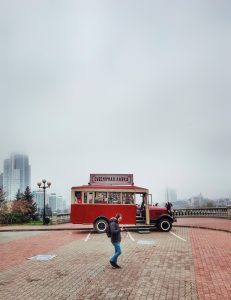Visual Illusions and Psychology
Be it on a screen for a computer or a piece of paper optical illusions can be fascinating. They’re an interesting demonstration of how the brain interprets information from our senses and make a picture of reality.
All of these are optical illusions. The human visual system is constantly looking for the light colors, distance, and dimensions.
What is an optical illusion?
An optical illusion occurs when an image confuses the eye and brain. In a fraction of a second, your visual system can send hundreds of images to your brain. The brain organizes the information by defining boundaries, analysing contrast areas, sorting colours and even guessing from previous experiences about what it will perceive.
Sometimes, things go wrong. The optical illusions don’t represent an error in the eyes or the brain it’s just an issue between the two concerning what’s being perceived. Similar illusions can be observed through other senses. If you have an animal crawling across your arms, it may appear to be going downwards.
There are three types of optical illusions: literal, physiological and cognitive. The physiological illusions are those which appear to be moving however, they’re actually still images. They arise from the brain stimulating its senses as it tries to interpret motion from a still image. These illusions can include the Ponzo Illusion where two lines seem to have different lengths.
The use of optical illusions in advertising – Check out these illusions from the experts
You’ve probably seen optical illusions at museums, in psychology classes, or in the walls of your hippie buddy. But you’ve probably never thought of using them for advertising. They can be extremely effective in grabbing the attention of people and creating a sense of motion, or in certain instances, crinkly eyes.
The lingerie brand that is well-known Jane Pain recently launched a campaign that featured optical illusions in the form of bums and busts adorning their merchandise. If you examine them at it closely, you’ll see that the body parts not dressed are actually elbows and knees.
The Kit Kat truck is another cool optical illusion used in ads. It makes it look like the driver has a seat in a hammock, instead of driving. This optical illusion is an excellent method to draw attention of people, and to encourage customers to pause and have an Kit Kat. The ad also utilizes perceptual set and priming to make a positive impression to the brand.
Artistic optical illusions
The MC Escher’s Penrose triangle and his never-ending staircase are both well-known examples of optical illusions. Since the Renaissance optical effects were an essential part of art. Artists used the camera obscura, as well as linear perspective to make stunning trompe-l’oeil illusions.
It is often geometric in its nature. Op art is not representational and uses lines, shapes and color blocks to create an impression of movements, hidden images, or swells or warping. The work of Vasarely and his 1965 exhibition The Responsive Eye led to its rise in popularity in the 1960s.
Inspired by the op-art movement, the painter Joseph Albers experimented with how colors interact and influence one another. In his Homage to the Square paintings, Albers layers colored squares on top of one another to explore the way different hues influence our perception of form and depth.
Optical illusions in music
The latest optical illusion on the rounds is a musical one. It’s a format of musical notes, which are all identical. They can create the illusion of lyrics when playing simultaneously on a keyboard.
These clever illusions are a great illustration of how your brain processes the information from your senses and forms an impression of the world around you. Our minds are incredibly powerful and can be incredibly powerful, whether that happens through natural or deliberate.
Artists such as Bridget Riley, Victor Vasarely and Jesus Rafael Soto experimented with illusionary effects in their artwork. Soto made immersive installations that blurred the boundaries between viewers and artists by inviting viewers to interact through his work.


